As web developers and designers, we understand the importance of optimizing images for the web in order to enhance user experience and improve website performance. In today’s digital age, where attention spans are short and load times are crucial, it is essential to ensure that images are properly optimized to strike a balance between quality and speed. In this article, we will discuss various tips and tools that can help you optimize images for the web effectively.
One of the key considerations when optimizing images for the web is file size. Large image files can slow down page load times, leading to a poor user experience and potentially affecting your website’s search engine rankings. By reducing image file sizes without compromising quality, you can improve load times and create a more seamless browsing experience for your visitors.
In addition to file size, image format and compression techniques play a significant role in image optimization. Choosing the right file format, whether it be JPEG, PNG, or SVG, can make a difference in how quickly an image loads on a webpage. Furthermore, utilizing compression tools and techniques can further reduce file sizes without sacrificing image quality. By implementing these tips and utilizing the right tools, you can optimize images for the web effectively and enhance the overall performance of your website.
Understand why image size matters.
Images play a critical role in enhancing the appeal and engagement of web content. They have the power to convey emotions, spark interests, and create an overall immersive experience for users. However, one fundamental aspect that often gets overlooked is the importance of image size. When we consider why image size matters, it becomes evident that larger image files can significantly impact the loading speed of a website. As web developers, we must prioritize optimizing images to strike a balance between visual quality and efficient loading times. By resizing and compressing images appropriately, we can ensure a seamless user experience and improve our website’s performance in the digital realm.
Compress images without quality loss.
One effective method to compress images without compromising quality involves leveraging advanced image compression tools and techniques. By employing tools like lossless compression algorithms or online platforms dedicated to image optimization, we can effectively reduce file sizes while retaining the image’s original quality. Through this approach, we can achieve significant reductions in image sizes without sacrificing clarity or visual appeal. Additionally, utilizing file formats like PNG-24, which support transparency and high-quality images, can aid in preserving image integrity during the compression process. Embracing such advanced methods allows us to strike a harmonious balance between image optimization and visual fidelity, ensuring an enhanced user experience on the web.
Choose the right image format.
In ensuring optimal image quality and performance on the web, selecting the most suitable image format is crucial. Each image format comes with its unique strengths and recommended use cases. For instance, JPEG format is ideal for photographs and images with gradients, whereas PNG format is preferred for images with transparent backgrounds or requiring lossless compression. Similarly, SVG format is suitable for vector graphics and logos due to its scalability without compromising quality. By strategically choosing the right image format based on the content and desired outcome, we can enhance web performance and user experience effectively.
Use responsive images for web.
To further enhance the user experience and optimize web performance, we should also prioritize the use of responsive images. Responsive images automatically adjust their size and resolution based on the user’s screen size and device capabilities, ensuring that the images look crisp and load efficiently on any device. By implementing responsive images through HTML markup or CSS styling, we can create a more adaptable and user-friendly web experience. This approach not only improves the visual appeal of the website but also contributes to faster loading times and better overall performance, catering to a diverse range of users accessing the site across various platforms. By embracing responsive images in our web design strategy, we can effectively address the growing need for adaptability and responsiveness in the digital landscape.
Leverage lazy loading for optimization.
In our ongoing efforts to optimize web performance and provide an exceptional user experience, it is essential to leverage lazy loading for efficient content delivery. Lazy loading is a technique that defers the loading of non-essential resources, such as images, until they are needed, thereby reducing initial page load times and conserving bandwidth. By implementing lazy loading for images below the fold or off-screen elements, we can prioritize the loading of critical content above the fold, ensuring faster initial page rendering and improved overall performance. This strategy not only enhances the perceived speed of the website but also minimizes unnecessary data consumption, leading to a more streamlined and responsive user experience. Leveraging lazy loading as part of our optimization efforts allows us to strike a balance between content-rich visuals and optimized page loading, catering to the dynamic demands of modern web users.
Optimize image alt text properly.
To ensure comprehensive accessibility and enhanced search engine optimization, we must pay careful attention to optimizing image alt text properly. Alt text, also known as alternative text, provides a textual description of images for users who may not be able to view them, such as those using screen readers or in cases where images fail to load. By incorporating descriptive and relevant alt text for all images within our web content, we enable individuals with visual impairments to comprehend the context and purpose of each image. Furthermore, search engines utilize alt text to understand the content of images, contributing to improved indexing and visibility in search results. Properly optimized image alt text not only enhances inclusivity and user experience but also reinforces our website’s search engine ranking and overall discoverability across the web.
Utilize CDN for faster loading.
When aiming to boost website performance and optimize user experience, incorporating a Content Delivery Network (CDN) is a strategic choice. By distributing website assets across multiple servers geographically closer to users, we can reduce latency and enhance loading speeds significantly. CDNs cache content and deliver it to users from the nearest server, reducing the physical distance data needs to travel, and subsequently improving page loading times. Through utilizing a CDN, we can efficiently deliver images and other web content to our visitors, ensuring faster and more reliable access while effectively managing traffic spikes and preventing server overloads. The integration of a CDN into our web infrastructure not only accelerates content delivery but also contributes to a smoother browsing experience, ultimately fortifying our website’s performance and user satisfaction.

Check image loading speed regularly.
Monitoring and analyzing image loading speed regularly is crucial in maintaining optimal website performance and ensuring a seamless user experience. By conducting periodic assessments of how quickly images load on our web pages, we can identify potential bottlenecks or areas for improvement. Constantly monitoring image loading speed allows us to proactively address any issues that may arise, such as large or improperly formatted images causing slow loading times. Regular evaluations help us to fine-tune our image optimization strategies and implement necessary adjustments to enhance loading speeds. Through consistent monitoring of image loading performance, we can uphold high standards of website efficiency and user satisfaction, creating a more engaging and responsive online environment for visitors.
Minimize redirects for improved performance.
As we continue to optimize our website for enhanced performance, it is essential to minimize the use of redirects to streamline the user experience. Redirects can significantly impact loading times, creating unnecessary delays and additional HTTP requests. By reducing the number of redirects utilized on our web pages, we can minimize the time it takes for users to access content and improve overall site speed. Implementing a more direct path for users to reach their intended destination not only enhances user satisfaction but also contributes to a more efficient browsing experience. Through a strategic approach to minimizing redirects, we can prioritize speed and responsiveness, ultimately optimizing our website for improved performance.
Monitor SEO impact of images.
To ensure our website is fully optimized for search engine rankings, it is crucial to monitor the SEO impact of images. Images play a significant role in enhancing the visual appeal and user engagement of our web pages. However, without proper optimization, images can also contribute to slow loading times, affecting overall site performance. By analyzing the SEO impact of images, we can assess factors such as file size, format, and alt text. Optimizing images for search engines by utilizing descriptive filenames, relevant alt text, and reducing file sizes can improve website accessibility and boost SEO rankings. Regularly monitoring and optimizing images for SEO will not only enhance the user experience but also contribute to higher visibility and improved search engine rankings.
In conclusion, optimizing images for the web is crucial for enhancing user experience and improving website performance. By utilizing tools such as image compressors, resizing tools, and file formats like WebP, we can ensure that our images are both visually appealing and load quickly on all devices. It is important to remember that even small changes in image optimization can lead to significant improvements in website speed and overall user satisfaction. Let’s continue to prioritize image optimization in our web design process to create a seamless and efficient online experience for our audience.
FAQ
What are the benefits of optimizing images for the web in terms of website performance and user experience?
When we optimize images for the web, our website’s performance improves significantly. By reducing image file sizes, we enhance loading times and decrease bandwidth usage, leading to a smoother user experience. Additionally, optimized images contribute to faster page load times, which can reduce bounce rates and improve SEO rankings. Overall, optimizing images is crucial for creating a more efficient and user-friendly website that prioritizes performance and enhances the overall user experience.
What are some common tools and software available for optimizing images for the web?
We often use tools like Adobe Photoshop, GIMP, and Canva to optimize images for the web. These software allow us to adjust image sizes, compress files, and enhance image quality to ensure faster loading times and better user experience on websites. Additionally, online tools such as TinyPNG and JPEGmini are handy for further reducing image file sizes without compromising quality. By utilizing these tools, we can effectively optimize images for the web and improve overall website performance.
How can image compression techniques help reduce file sizes without compromising image quality?
By utilizing image compression techniques, we can significantly decrease file sizes without sacrificing image quality. Through methods like lossless compression, which removes unnecessary data without affecting the image’s visual appearance, and lossy compression, which selectively discards some image data while maintaining perceptual quality, we can achieve smaller file sizes that are still visually appealing. These techniques help optimize storage space and enhance loading times for websites or applications, ultimately improving user experience. Overall, image compression is a valuable tool for balancing file size reduction with maintaining high-quality visuals.
What are some best practices for choosing the right file format (JPEG, PNG, GIF, etc.) when optimizing images for the web?
When optimizing images for the web, we typically consider factors like image quality, file size, and transparency needs. JPEG is great for photographs due to its small file size, while PNG is ideal for images with transparency. GIF is suitable for simple graphics or animations. It’s crucial to balance image quality with load times. We often use tools like image compressors to reduce file size without compromising quality. Testing different formats and optimizing images based on specific requirements can help improve website performance and user experience.
How can lazy loading and responsive image techniques be used to further optimize images for different devices and screen sizes?
We can implement lazy loading to defer loading offscreen images until they are needed, reducing initial load time. For responsive images, we can use srcset and sizes attributes to serve appropriate image sizes based on device resolution, ensuring optimal display quality and performance across various screens. By combining these techniques, we can enhance user experience by efficiently managing image loading and rendering on different devices and screen sizes.
